Light
The electromagnetic spectrum

The human eye
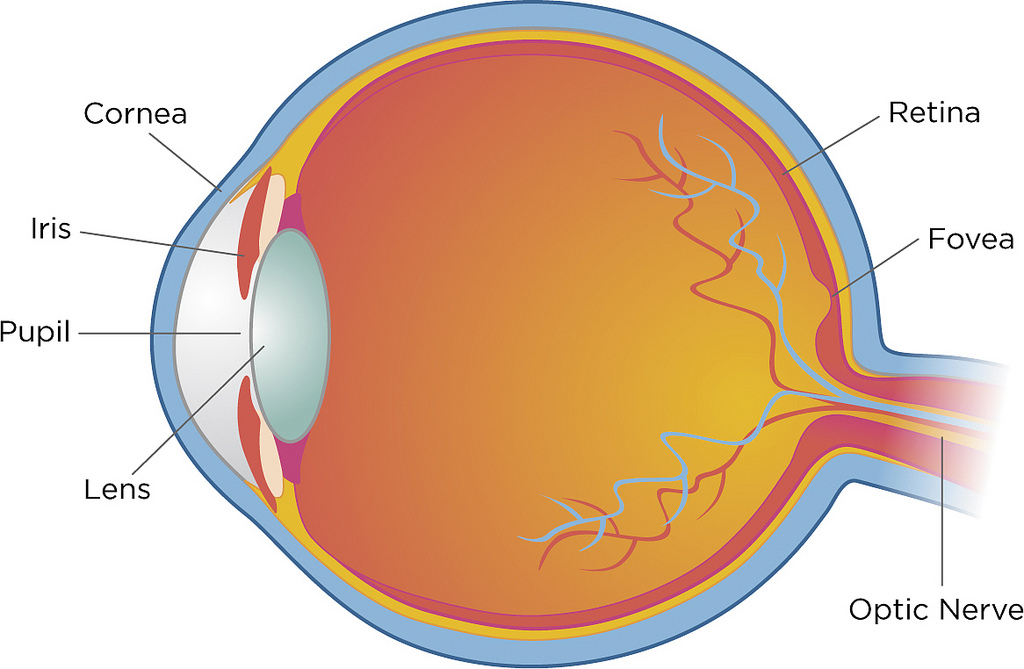
Light sources
Natural light
The primary light source that man has relied on for thousands of years is the sun. It is only relatively recently in evolutionary terms that we have developed light sources based on fire, such as candles and gaslights, and more recently still sources run by electricity. Therefore, it is reasonable to suppose that our eyes have developed with the expectation that vision will be provided by natural light, which contains all wavelengths in roughly the same proportion. There is speculation, but little evidence, to say that our bodies need the full complement of wavelengths in order to function optimally, and that by working or living under artificial lights we are somehow causing ourselves damage. Probably more important than the spectral composition of the light is the variation in light levels over the 24 hours of the day, for two reasons. First, our bodies have natural rhythms, and these are thought to be ‘tuned’ to, or controlled by, the day-night cycle. Second, we appear to have a biological need for light – in Scandinavia (where the winter days are very short and the winter nights very long) the depression rate is much higher in the winter than in the summer.
Artificial light
There are two main types of lamp used to provide interior lighting. The first of these is the incandescent light – the traditional ‘light-bulb’ – which consists of a thin piece of wire (a filament) sealed into a glass case along with a special gas. When electricity passes through the wire it glows, giving off light and infrared radiation (which we feel as heat). The second type is a fluorescent tube, which is again a glass tube filled with gas. This tube has two electrodes, one at either end, and as electrons fly from one end to the other they excite the gas which then gives off electromagnetic energy. Some of this energy is in the form of visible light, some of it is invisible. The name of the tube comes about because they have a fluorescent coating on the inside which absorbs this invisible radiation, and then emits radiation in the form of light.
Colour rendering properties
There are two main areas where there are differences between the light produced by these three light sources, the sun, the incandescent lamp and the fluorescent tube. The first is in the relative amounts of radiation that each emits. The sun emits roughly equally across the visible spectrum, the lamp emits more radiation the higher the wavelength, and the fluorescent tube emits unevenly across the spectrum. It is worth mentioning one further lamp here, the sodium street-lamp, because these are often monochromatic, that is they only emit light at a single wavelength, sodium yellow. Because of the different spectral compositions of the sources, colours of things that we look at under each source can appear different. This is worth remembering when performing any colour-critical task, such as choosing clothes or doing inspection work. Have you noticed that under sodium street-lamps everything looks a dim shade of yellow and no other colours are visible? The following two photographs were taken of the same bathroom interior walls and ceiling. In the first picture the room is lit only by artificial halogen lamps, and there is little difference seen in the colour of the walls and the ceiling. In the second, the room is lit by daylight, which has a broader spectrum and provides better colour rendering, and the colour difference between the wall and ceiling is quite apparent.
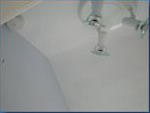
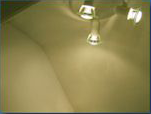
Time properties
When a light is flashed at a slow rate, 10 or 20 times per second, it appears to flicker. As the flash rate increases the flickering appearance decreases, until eventually the light appears to be steady. Both the sun and an incandescent lamp produce light which is essentially uniform, whereas the amount of light produced by a fluorescent tube (like that produced by a television or a VDU) varies rapidly. Usually the frequency of this flicker is so fast that the eye can’t follow it, and the light appears to be steady. When a tube gets old, however, it may produce some slower flicker and this can often be seen by eye. As well as affecting the eye, a flickering lamp can alter the appearance of an object that the eye is viewing. A similar effect can be seen in television or films where a wheel (for example, a wagon wheel in a western) appears to stop moving, or even go backwards. This happens because the camera does not make a continuous record of the scene, but takes a number of pictures in rapid succession. Because each is similar to the previous picture, and they are shown in quick succession, the eye sees the film as continuous movement. The following pictures show two successive frames of a cinema film. The wheel has rotated clockwise between frames, and the red and blue spokes have moved round (‘forward’). In the second frame, the original position of the red spoke is shown as a dashed line, and you can see that the blue spoke is closer to this than the solid red spoke. Your eye sees this (blue) spoke as if it were the original (red) spoke. Therefore, it appears that the wheel has moved anti-clockwise (backwards) rather than clockwise (forwards). This will only happen if the wheel moves round at less than one spoke-distance between successive frames.
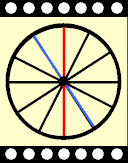
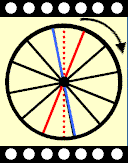
Legal requirements for lighting
Use of lighting products is governed by the Electricity at Work Regulations. New lighting installations in areas using display screen equipment (DSE) must also comply with Health & Safety (Display Screen Equipment) Regulations. Good lighting is considered as contributing to health and safety at work, and the HSE has produced a Lighting at Work guide (HSG38, available from www.hse.gov.uk), which is aimed at employers, safety officers, and those involved in the design, installation and maintenance of lighting systems.
To help ensure that that the regulatory requirements are met when designing spaces in which DSE is to be used, CIBSE, the Chartered Institution of Building Services Engineers, has published LG03: The visual environment for display screen use. The publication gives information about the background to the problems of using DSE in the working environment; the selection of the most appropriate lighting design solution for different situations; and detailed advice on the application of each lighting design technique. An update to LG3 has just been produced which takes into account new technology and changing standards. A further guide, LG07: Lighting for Offices, includes everything from lighting techniques, to areas with particular lighting needs. The guide also provides practical solutions to many of the problems encountered in the application of lighting within the office environment. All these guides are available from the Society of Light and Lighting at www.cibse.org.
Guidelines for choosing lighting
Light Levels
As any cricket fan who has paid to watch a game only to have it abandoned when ‘bad light stopped play’ (even though they can still read their newspaper) will tell you, different tasks need different minimum amounts of light to be performed at a satisfactory level. The amount of light needed to precisely judge the ball’s position and flight (particularly when a fast bowler is used) is much greater than that needed for reading high-contrast printed text. Similarly, the requirements for reading a large warehouse notice are very different from those for performing a delicate operation, such as mending the inside of a watch, or inspecting minute computer parts. Consequently, the amount of light needed for the general lighting of an interior, such as an office, will be less than that needed for the performance of specific tasks, such as reading documents. The discrepancy can be met by the use of task lighting in addition to the general lighting, providing extra illumination where it is needed.
The amount of light falling onto a book, desk or other surface is measured in units called lux. Various organisations provide recommended values for ‘good practice’ light levels, and these values vary tremendously for different environments. Modifications may be needed depending on the tasks performed. The requirements
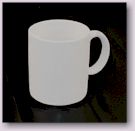
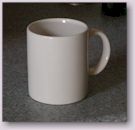
Direction of light
As well as the amount of light, interior designers will consider the direction of light as this has a significant effect on the appearance and pleasantness of a room. Small light sources, such as a single lamp in the middle of a ceiling, are unnatural and can feel harsh. Natural daylight is primarily provided by the sky and not directly by the sun.
Daylight is important to people, and they report much more unhappiness when they are in a window-free environment than they do in one where they can see the outside world. Daylight comes into a room through the windows, and as these are often only on one side of a room, the amount of daylight that penetrates the room is reduced the further away from the window you are. The importance of this has been recognised by lighting engineers, and the ‘Daylight Factor’ is a measure of how much daylight reaches a point in the room.
Most artificial light sources are positioned above eye-height, as is the sky, and so the light in most environments is directed downwards. However, this is not always the case, and light can often flow sideways. This can be useful in factory inspection areas, where product quality is assessed and high contrast is needed.
To show how the directionality of lighting can change the appearance of an object, look at the two pictures on the left of the same coffee mug with different lighting positions. It is clear that they are pictures of a mug, but the appearance of solidity is very different between the two.
Glare
There are two distinct types of glare. The first reduces your visual performance, and this form is termed disability glare. The disability can occur either because the eye is affected (for example, the headlights of an oncoming car can temporarily blind you at night) or because the object viewed is affected (as when a bright light is reflected in a VDU screen, masking what is on the display). The second type of glare produces a feeling of pain in and around the eyes, and this form is termed discomfort glare. The main-beam car headlights shining directly into your eyes will usually hurt as well as temporarily blind you (and so both types of glare are present in this example). Although the mechanism underlying the discomfort is unknown, the survival advantage is clear – we avoid looking directly at bright light sources (such as the sun) which could damage our eyes. Remember to take account of potential glare when positioning light sources and equipment.
